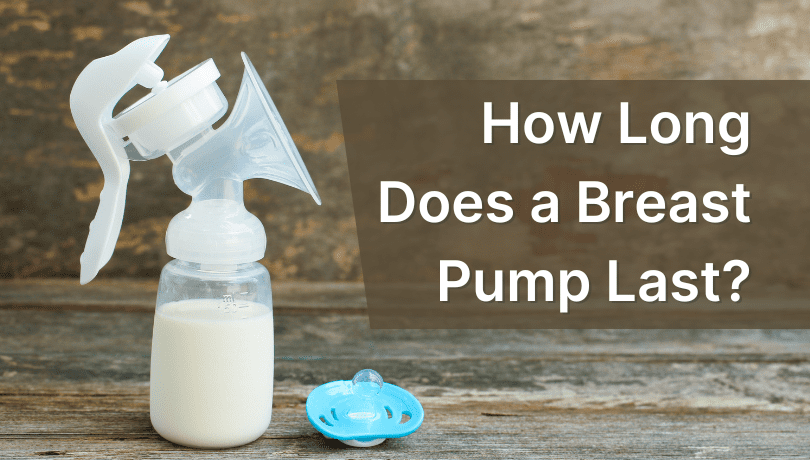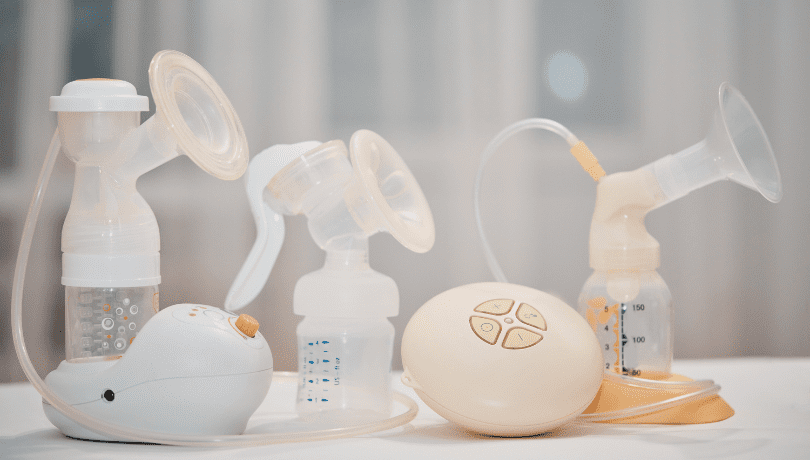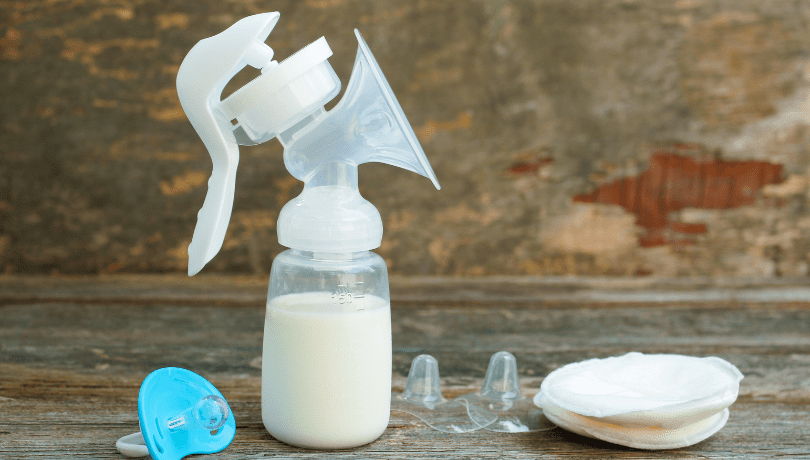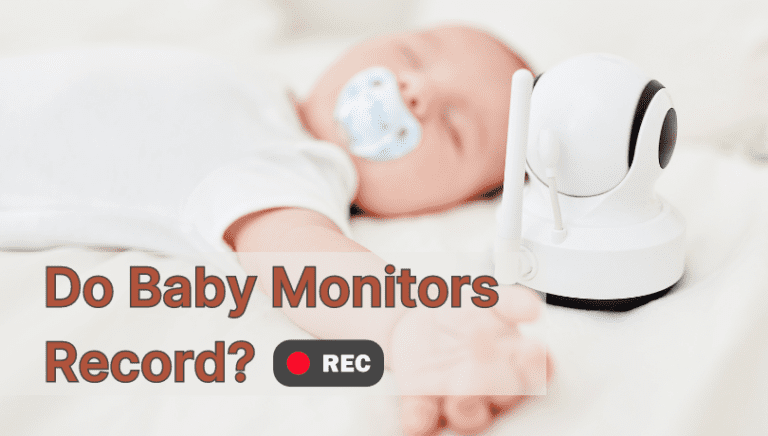Complete Guide: How Long Does a Breast Pump Last?
Welcome back, everyone! One of my previous posts explored what you can do with old breast pumps. We discussed how to donate used but hygienic pumps, how to recycle them, and the sustainable way to dispose of them. In this one, I think it’ll be helpful to know how long does a breast pump last and when to replace the parts.
I’ve sped through quite a few breast pumps during my time (I mean, I have six children. What can you do?) So, now I’ve got a knack for knowing when to replace them. Here’s hoping that this is useful to you as well. Fingers crossed!
Table of Contents

How Long Does a Breast Pump Last?
We know breast pumps wear and tear, like any tool or appliance. From what I’ve seen over the years, these are the usual lifespans:
- Electric pumps typically last between 1 and 3 years. I was a mum who pumped multiple times a day, so my pumps had a shorter lifespan than that. But some mothers pump less, so it lasts longer for them.
- Manual pumps last about a year or two before they wear and tear. Since manual pumps have fewer moving parts, they can last longer, but it all depends on how you maintain them.
And sure, these are just rough estimates. The lifespan varies depending on different factors. Let’s dive deeper into that.

1. The Brand You Buy It From
Quality matters. That’s it really. I believe it’s worth buying a high-quality pump than several low-quality ones.
Plus, a quality pump often comes with adjustable suction settings that help prevent all this unnecessary wear and tear. My favorite is the Lansinoh Signature Pro Double Electric Breast Pump with eight suction levels and three pumping styles! It’s one of the best I’ve used so far.
If you’re still figuring out manual breast pumps, check out my guide on using manual breast pumps effectively.
2. How Frequently You Use It
There are days when I would pump multiple times a day. You can’t help that! It’s just that it takes a toll on your dependable pump.
So, the more you use it, the more chances they wear and tear. If you have electric pumps, the motor and other moving parts might cause issues with regular use. So, that’s something to remember when you wonder how long they last.
3. How Well You Maintain It
Sometimes, after I pump at night, I get so tired that I just want to sleep. But I needed to clean, dry, and maintain the pumps. You can’t skip on that. It’s just unsanitary to keep it lying around, and I’m way too germ-conscious to do that.
When you don’t clean it, please know that milk residue and bacteria can build up, affecting the pump’s performance and causing health risks for you and your baby.
Signs You Need to Replace Your Pump
Whether you use an electric or manual pump, your pump will warn you about deteriorating parts. You’ve just gotta pick up on the warning signs:
1. The Suction Strength Isn’t the Same
- There was an instance when I sat down for a pump session and noticed that the pump wasn’t pulling milk like before, no matter what I changed. If this happens, your pump might be at the end of its life.
- When the suction reduces, there could be problems with the pump’s motor or valves. Please consider replacing the parts at this time.
2. Unusual, Weird Noises
- After about a year of use, I noticed that my electric breast pump from back then would make these clunky, grinding noises. It got so persistent, and I later had to replace the motor!
- So, if you start hearing any screeching or grinding noises in electric breast pumps, it can mean that something is malfunctioning and needs a replacement.
3. Noticeable Wear and Tear
- When I wash or dry my breast pump, I always check if it has tears, problematic cracks, or broken bits. I am a worry-wart with an obsessive eye for detail. So, any cracks or broken bits bother me to no end.
- Check the breast flanges, tubing, membranes, and other accessories for unmistakable physical damage. Please replace them whenever those get bothersome.
Replacing Breast Pump Parts
I can tell you that I was confused about when to replace breast pump parts. One solution was to read the user manual or the manufacturer’s website for guidelines. They often give out recommendations for parts.

But obviously, every mom’s pumping journey is different. So, you might need to adjust your replacement schedule based on your needs. Here is the schedule I follow:
| BREAST PUMP PART | REPLACEMENT SCHEDULE |
|---|---|
| Valves and Membranes | Every 2–3 months |
| Motor | Every year |
| Tubing | Every 6–12 months |
| Breast Shields | Every six months |
When multiple parts give me problems, I usually just replace the whole thing. It’s easier that way, especially if your breast pump is still under warranty.
The Importance of Keeping Spares
I always keep spares ready if something gets worn out. This way, you won’t have to scramble to replace a worn-out part during a pumping session.
Please keep a spare parts kit with extra valves, membranes, tubing, backflow protectors, and breast flanges on hand so you’re always prepared. I particularly had issues with finding a right breast pump flange fit, so I have multiple flanges at home.
Can Insurance Help Replace a Breast Pump?
Sometimes, yes. Whether you received your breast pump through insurance or purchased it as usual, there is usually a warranty on parts replacement.
Oh, and just something else to keep in mind. A friend of mine did not receive her reimbursement for pump replacement even with her insurance. The insurance guy told her it was because she bought a breast pump from a manufacturer not listed on her insurance coverage. That was wild. So, be careful.
Extending Its Life Through Maintenance
Sometimes, you just have to replace the parts. You can’t change that. But it also makes sense to find ways to use and maintain it well, don’t you think?
So, my step one to maintain it well is cleaning it after every use. My mother always tells me, “Cleanliness makes it easier to see the details.” I’ve found that to be true. She also says, “Housekeeping is like being caught in a revolving door.” Can’t disagree with that, either.
- I first detach the pump parts and wash them in warm, soapy water to remove leftover milk. Then, I rinse twice, air-dry, and sterilize using boiling water.
- While cleaning, I inspect the pump parts, like valves, membranes, breast flanges, motors, and tubing. And I take time to replace them when they are worn or damaged.
- And always, I store my pump in a clean, dry place away from direct sunlight until I use it next. In my house, that’s at the back of my cupboard, sealed in a bag.
Also, yes, you do want to make sure you’re using your breast pump as given in the directions. Being gentle and not overusing it helps you avoid a lot of replacement drama. This will make your breastfeeding and pumping journey easier, too.
Summing Up Pump Replacement
Hey, you’ve got this. Treat your pump well. It’ll return the favor by sticking around for the long haul.
Regularly cleaning, sanitizing, and replacing worn-out parts can keep your breast pump efficient for longer. And this is peace of mind for you and your baby.






